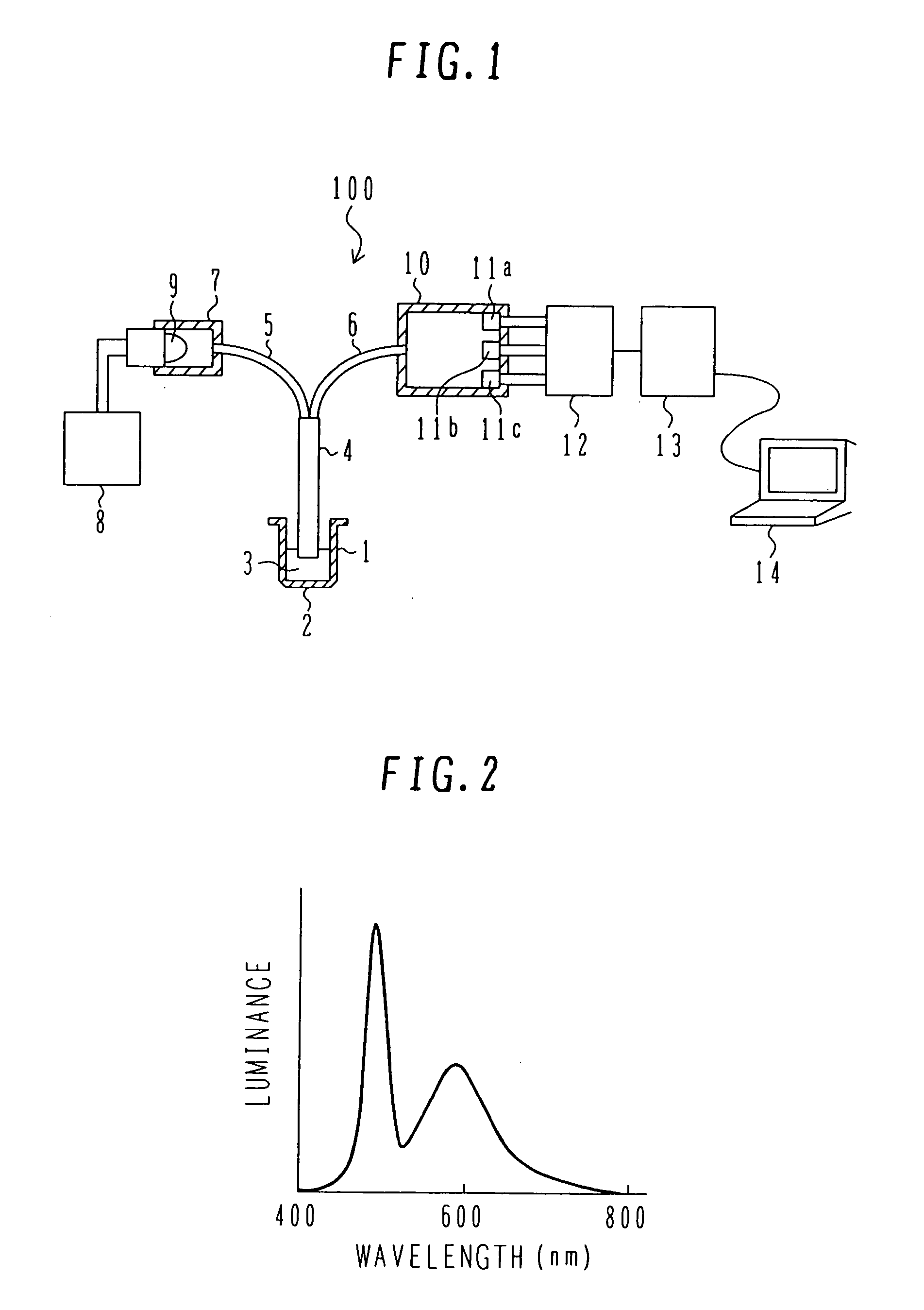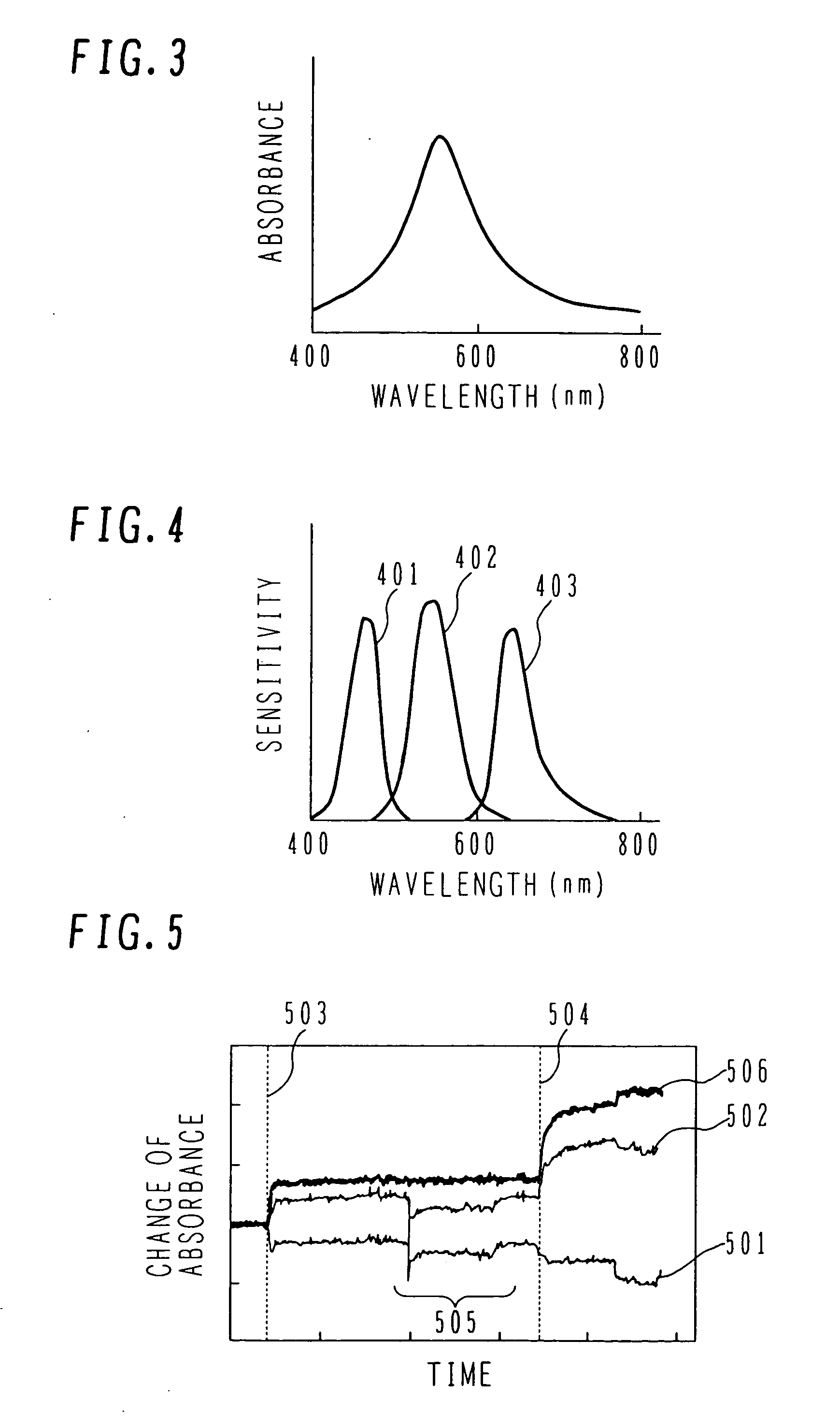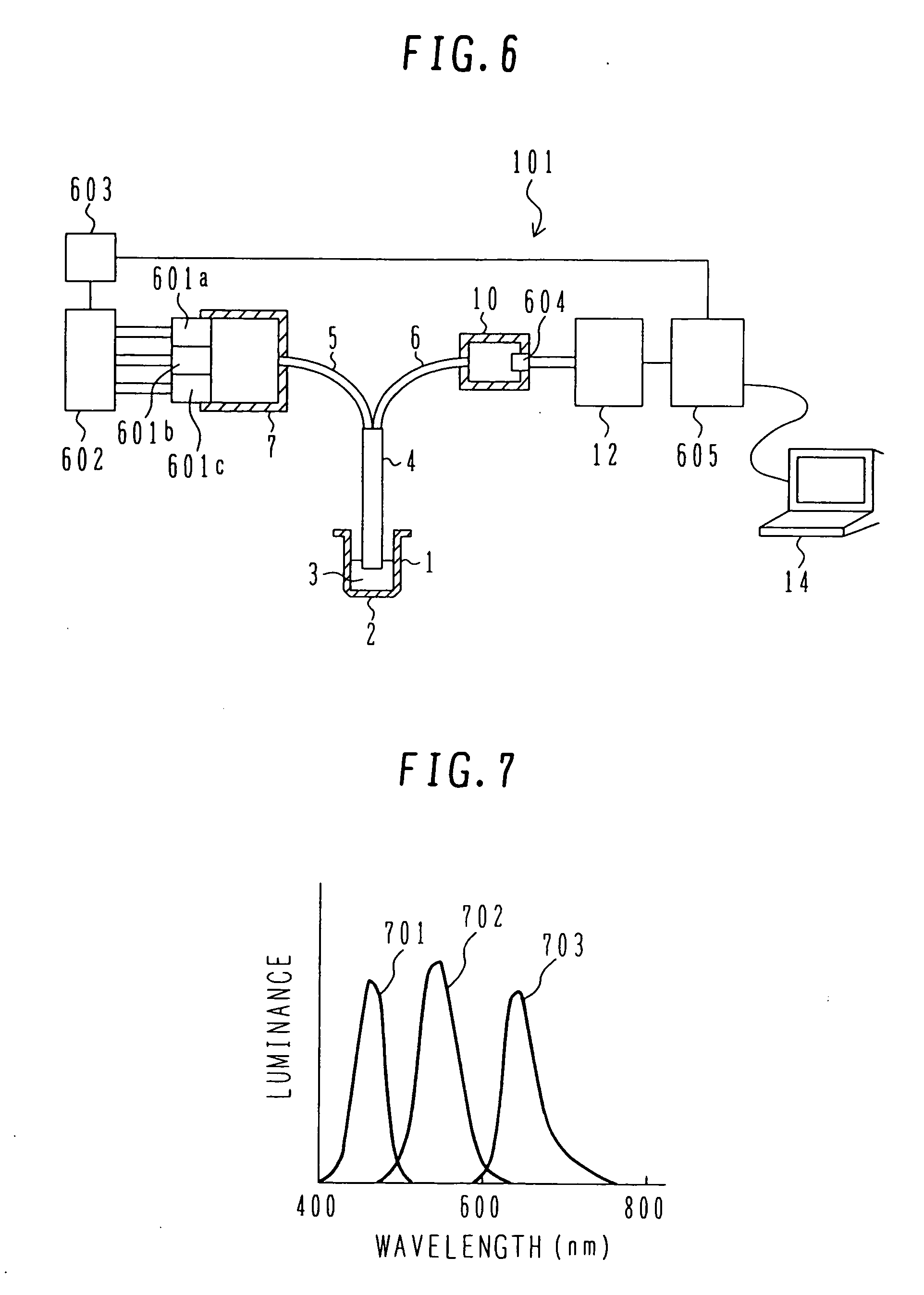Optical biosensor for biomolecular interaction analysis
- Summary
- Abstract
- Description
- Claims
- Application Information
AI Technical Summary
Benefits of technology
Problems solved by technology
Method used
Image
Examples
Embodiment Construction
[0022] Measuring devices for biomolecular interaction analysis according to several embodiments of the present invention will be described below with reference to the drawings. FIG. 1 is a schematic view of a measuring device for biomolecular interaction analysis, i.e., a device 100 for measuring a biomolecular binding amount, according to one embodiment of the present invention. A sensor well 1 serving as a container for containing an analysis sample 3 to be measured is in the form similar to a sample plate usually used in biochemical analysis. A noble metal nanoparticle sensor 2 similar to that disclosed in the above-cited Patent Document 1 (JP,A 2000-55920) is formed at the bottom of the sensor well 1. The surface of the noble metal nanoparticle sensor 2 is chemically modified or includes an analyte material fixed to it, e.g., an antigen, depending on the analysis purpose. In this embodiment, a running buffer, e.g., a phosphate buffer solution, is used as the analysis sample 3.
[...
PUM
 Login to View More
Login to View More Abstract
Description
Claims
Application Information
 Login to View More
Login to View More - R&D
- Intellectual Property
- Life Sciences
- Materials
- Tech Scout
- Unparalleled Data Quality
- Higher Quality Content
- 60% Fewer Hallucinations
Browse by: Latest US Patents, China's latest patents, Technical Efficacy Thesaurus, Application Domain, Technology Topic, Popular Technical Reports.
© 2025 PatSnap. All rights reserved.Legal|Privacy policy|Modern Slavery Act Transparency Statement|Sitemap|About US| Contact US: help@patsnap.com



